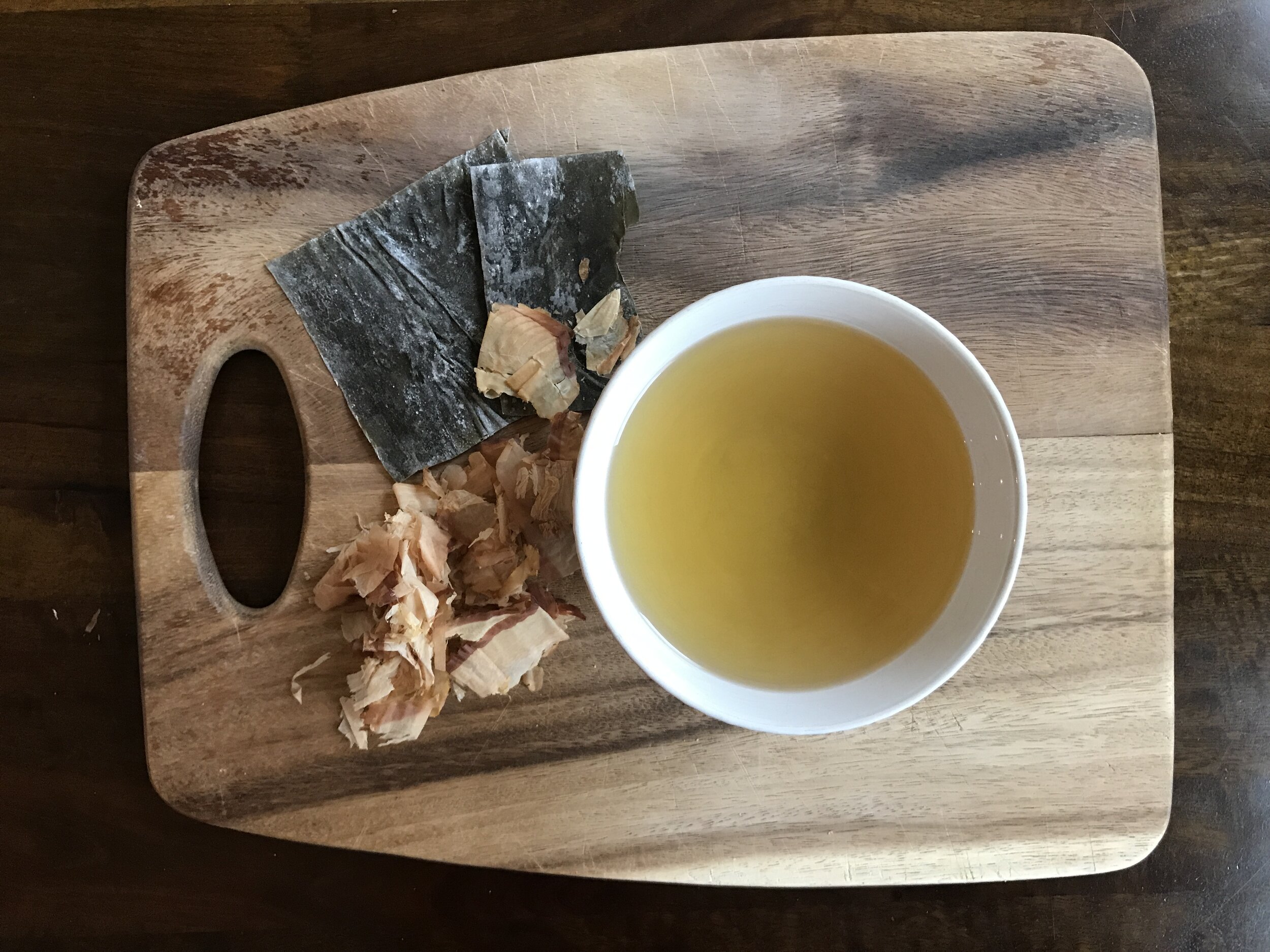Snapper Ceviche with Dashi and Seaweed
By Leslie Brenner
[Editor’s note: This is Part 2 of a multi-part series. Here’s Part 1.]
If you’ve eaten ceviche in Peru, or dined anywhere in the world with a serious ceviche program, you’ve probably heard of leche de tigre — “tiger’s milk.” A marinade and sauce that can also be sipped after you’re done eating the ceviche, it’s one of the most delicious tricks up the sleeves of the Peruvian ceviche masters — Peruvians even spike it with pisco (Peru’s national liquor) and drink it as a cocktail.
Leche de tigre is brilliant for introducing umami into a ceviche, while at the same time smoothing out the harsh acid of the lime juice. You’ll see it as an ingredient in many ceviche recipes, along with a sub-recipe, as it’s not something you can buy: It’s fish broth combined with lime juice, fish trimmings and cilantro, maybe garlic and/or chile. Perhaps some red onion, which is also used in the fish broth. Oh, yes — first you’ll need a recipe for fish broth. And in order to make fish broth, you’ll need fish frames and heads.
In other words, most home cooks will skip that recipe.
It’s easy to see how restaurants can manage to make fish broth for leche de tigre; they can start their ceviches from whole fish and use those heads and frames for big batches of broth. But for most of us at home, part of the appeal of ceviche is that it’s not just fresh, cool and expressive, but also relatively quick and easy.
So how to add umami into the equation without going to all that trouble? Two interesting — and very different — ways to go are dashi or tomatoes.
Ingredients for dashi (kombu and katsuobushi, or dried bonito flakes), and the finished stock
A Japanese touch
I thought about dashi, the simple, easy-to-make stock that’s the foundation of Japanese cooking, because it’s packed with umami, redolent of the sea, and quick and easy to make. In fact, it only involves two ingredients besides water: kombu (a type of seaweed) and bonito flakes. You can keep both on hand in the pantry, and it only takes 10 or 15 minutes for a batch. You can freeze the leftover dashi, or use it later to make a quick miso soup.
Dashi as a ceviche ingredient makes sense culturally, because there’s a strong Japanese influence in Peruvian cooking — known as cocina nikkei — thanks to Japanese immigration to Peru beginning in the late 19th century. And dashi’s ingredients — seaweed and bonito — are both found in Peru’s Pacific.
While I’ve seen various ceviches that use Japanese ingredients — including shaved bonito (or katsuobushi) as a garnish — I haven’t seen any recipes that use dashi in the marinade.
It works beautifully, imparting a gentle sea-kissed umami to the fish. I chose red snapper from the Gulf of Mexico for this ceviche because that’s what looked beautiful that day, but you could use sea bass, or any firm-fleshed white fish. Wakame seaweed and cucumbers play nicely with the fish, and you can finish it with furikake — the Japanese condiment that includes sesame seeds, salt, red pepper and nori seaweed.
Tomato power
Taking advantage of tomatoes’ awesome umami power feels just right for the season. Sure, you can dice tomatoes and toss them in with whatever fish or seafood you’re using, or use halved cherry tomatoes, which also add pretty color. But why not include some puréed tomato in the marinade?
In Central Ecuador, there is a tradition of including puréed tomatoes in the marinade for a ceviche of blanched shrimp.
Here I poached the shrimp in a quick broth made from their shells, along with cilantro and red onion. I strained the broth, combined it with chopped tomato, lime juice, salt and arbol chile, then blitzed it for the marinade/sauce. Slivers of red onion and sliced cucumbers garnished the ceviche — which I served with tostadas. (In Ecuador, it would be more likely to be served with plaintain chips, but the tostadas are really nice.)
The sauce, meanwhile, is so delicious my husband and I drank every drop.
RECIPE: Ecuador-Inspired Shrimp Ceviche
Finally, here’s an easy raw-fish ceviche that requires no cooking except zapping an ear of corn in the microwave for 60 seconds (or giving it a quick dunk in boiling water). Starring tomatoes, avocado, yellow bell pepper, scallions, cilantro and barely-cooked corn kernels, it’s a full-on celebration of summer. The tomato takes two forms: It’s puréed in the marinade as well as diced with the other garnishes.
This time it was rockfish that spoke to me from the fish case: it was fresh and gorgeous. Snapper or sea bass would be fabulous, too; choose what looks most appealing.
RECIPE: Rockfish Ceviche with Tomato and Corn
Note about the safety of raw fish
FDA guidelines stipulate that any fish other than tuna species (including bigeye, yellowfin, bonito/skipjack and bluefin) and farmed salmon must be frozen before it’s safe to consume raw; freezing it kills any possible parasites. However, as this excellent Serious Eats article explains, the risk of infection from raw fish is very low. Personally, I would never eat raw farmed salmon, because of well documented problems in their feed (and I don’t like their flavor.) The phrase “sushi-grade” is meaningless. If you’re nervous about the safety of eating raw fish, it’s best to choose something that’s been frozen.
READ: Summer of Ceviche, Part 3
Curious about how this article came to be? Check out our weekly Substack newsletter where we develop ideas and deliver extra recipes. Here’s the issue that birthed this ceviche series.









